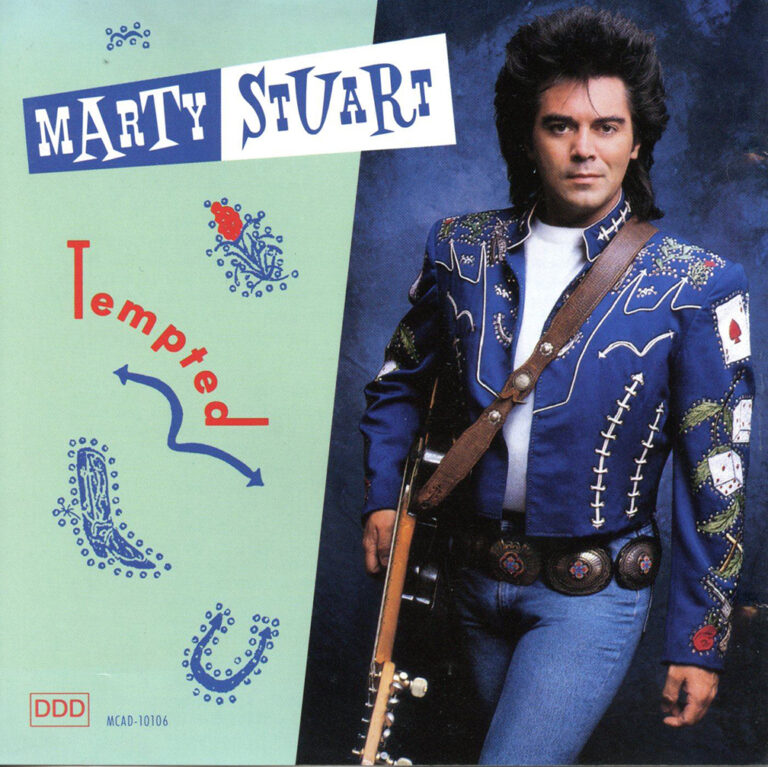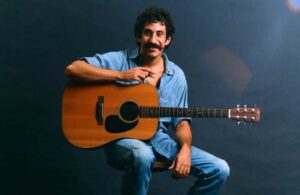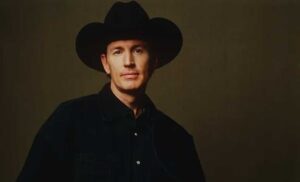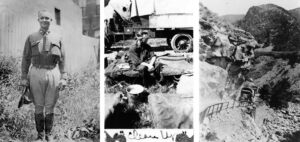The country music industry is filled with musicians and performers who are critically acclaimed yet have limited commercial success. No. 1 hits are rare for these artists, and you’re more likely to find their names among those nominated for Grammys as opposed to Country Music Association (CMA) awards.
Many of these lesser-known performers are actually driving forces behind the songs of commercial artists. These songwriters and studio musicians are well known throughout the business.
One such musician — Marty Stuart, an ambassador for the genre — likely falls into this category for many country fans. Along Stuart’s musical journey, he’s even turned out a trucking song or two.
But before focusing on his songs, let’s explore the evolution Stuart’s style. After all, it’s one that encompasses nearly 100 years of country music history.
While you may associate Marty Stuart with bluegrass, don’t let his instrument of choice — the mandolin — fool you. His style spans the farthest reaches of country music.
Stuart was born in the deep south — Philadelphia, Mississippi — in 1958. He shared a passion for music with his father and grew up watching what he refers to as “Hillbilly Hollywood” on television, syndicated shows that featured 1960s artists like Porter Wagoner and the Wilburn Brothers.
The visual appeal of country music struck Stuart, and the rhinestone suits and other characteristics of country performers fascinated the youngster. As he grew older, Stuart could be found hanging around Philadelphia’s Busy Bee Café Juke Joint, where he was introduced to the acoustics of bluegrass music.
At age 11, Stuart attended his first Johnny Cash concert in nearby Jackson, Mississippi. Standing against the stage before being pulled away by security, the youngster was mesmerized by Cash’s performance. At that moment, he recalled, he wanted to BE Johnny Cash. It became a self-fulfilling prophecy.
While still a pre-teen, Stuart started his first band. In 1970 he attended a concert in Philadelphia featuring Connie Smith, his mother’s favorite singer. He met Smith and took photographs of her, later telling his mother that he would someday marry the singer, despite the fact she was 29 years old — 17 years older than young Stuart.
But marriage would have to wait. First, Stuart had to find his start in the music through which he’d eventually make his career. A mandolin he purchased before he turned 14 became his ticket to success.
As a teenager, Stuart joined his first road band, the Sullivan Family Gospel Singers, touring with them in the summer of 1972. The experience was like a “fantasy camp,” he said.
The return to his freshman year in high school didn’t sit well with him. By September, he’d left school and traveled to Nashville at the behest of Roland White, a member of Lester Flatt’s band. In short order, Stuart also joined the band.
He’d found his life’s calling.
During the 1970s, he continued to grow as a musician, becoming proficient on several stringed instruments. By decade’s end, Stuart had come full circle when Johnny Cash invited him to join his touring band. Over the next five years, Stuart toured with Cash, and he married his boss’ daughter, Cindy (not Connie Smith) in 1983.
Although Stuart recorded a couple of independent albums early in his career, commercial success eluded him. But in 1985 he signed with Columbia Records. After nearly 15 years in the music business, he finally set out on his own. By year’s end, Columbia released his self-titled album, and he arrived on the billboard charts with his first single, “Arlene.” Although the song wasn’t a major hit (No. 19 on the charts), it was a Top 40 single, and success appeared on the horizon.
But the follow-up singles from the album received less airplay, with only one reaching the Top 40. Through the remainder of the 1980s, Stuart struggled commercially, recording three albums but only achieving one additional Top 40 single.
That all changed in late 1989 when Stuart left Columbia for MCA records. His first album for the new label, “Hillbilly Rock,” became his breakout record. The title track from the album shot to No. 8 on the charts, boosted by a music video. The single launched a string of hits for Stuart, and he had five more songs reach the Top 10 through early 1992.
In 1991, he wrote “The Whiskey Ain’t Working” for a rising star, Travis Tritt, and was invited to perform on the singer’s second album. The song climbed to No. 2 on the charts. It would be the high-water mark of Stuart’s commercial career. Throughout the 1990s, Stuart continued recording albums, and the critics generally loved his work — but airplay was elusive. Stuart never cracked the Top 40 again.
“The Whiskey Ain’t Working” did land Marty Stuart his first award after some CMA and ACM nominations, but it came from the Grammys, not country music’s awarding committees. He was nominated, along with others, for several compilation and concept albums during the 1990s and early 2000s, but the Grammys continued to best recognized Stuart’s contribution to music.
Perhaps his most notable award came in 2001 when Stuart brought home a Grammy for Best Country Instrumental Performance for the bluegrass favorite, “Foggy Mountain Breakdown.”
As his commercial career declined, Stuart started a new band in 2002, “The Fabulous Superlatives.” Much in the way of critically acclaimed performers like BR549 and Junior Brown, the band developed a cult following and offered opportunities to showcase Stuart’s talent.
Beginning in 2008, the band backed him up on “The Marty Stuart Show,” an RFD-TV produced television show. For Stuart, the show took him back to his youth and his fascination with the visual aspect of country music. He dressed in faded blue jeans and a rhinestone-studded jacket — and in a nod to the golden era of country music, he wore a tight scarf around his neck.
But it was his hair that made Stuart universally recognizable. His long, flowing tresses have been equated to the mane of an elegant horse by some writers.
Despite all of Stuart’s accomplishments as a singer, songwriter and instrumentalist, he gained his most significant fame as a country music historian. A traditionalist, Stuart has been a promoter of the genre’s history throughout his career, serving as a six-term president of the Country Music Foundation.
The role offered a pulpit to campaign for the preservation of country music’s heritage. It also helped him reach the genre’s highest achievement in 2020 when he was elected to the Country Music Hall of Fame.
Until next time, pull up some Marty Stuart on your smartphone and give it a listen. We’ll delve deeper into the performer’s complex style — and his trucking songs — in the next column.
Since retiring from a career as an outdoor recreation professional from the State of Arkansas, Kris Rutherford has worked as a freelance writer and, with his wife, owns and publishes a small Northeast Texas newspaper, The Roxton Progress. Kris has worked as a ghostwriter and editor and has authored seven books of his own. He became interested in the trucking industry as a child in the 1970s when his family traveled the interstates twice a year between their home in Maine and their native Texas. He has been a classic country music enthusiast since the age of nine when he developed a special interest in trucking songs.














Man amazing journey to stardem for Marty Stuart, heard of him from my mother’s apartment cleaning. Coming home from school in Massachusetts and windows open and Country Music Blaring out and a bunch of Classic Country. THANK Marty Stuart, and let him know I admire him more because of this article, it’s what I learned from Country that I am true American.